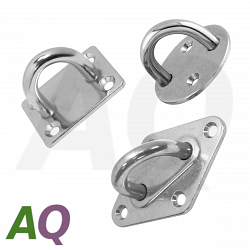- Self-tapping thread inserts made of stainless steel VA
- Fastening element for the production of heavy-duty, wear-resistant and vibration-proof screw connections in materials with low shear strength
- Internal thread: metric ISO standard thread according to DIN 13-1
- External thread: fine thread
- Completely made of stainless steel VA
- Sizes (internal thread): M3, M4, M5, M6, M8, M10, M12
- Please select the desired inner diameter of the thread inserts when ordering.
Self-tapping thread inserts are used as a fastener for making heavy-duty, wear-resistant and vibration-proof threaded connections in materials with low shear strength. The tapered shape and the tapping slot thereby enable secure screwing into the workpiece.
The internal thread is a metric ISO standard thread according to DIN 13-1, the external thread is a fine thread! The background here is that the inserts should cut into the material by itself. Tips for use can be found under things to know.
Notes:
The photos shown are sample images - you will of course receive the size and quantity you have selected.
Things to know:
To properly use self-separating thread inserts the workpiece must be pre-drilled. How large the drill diameter must be depends on the material of the workpiece as well as the outer diameter of the thread insert used. Depending on the strength of the material, the drill hole should be made approx. 0.5 to 1 mm smaller than the diameter of the external thread. We recommend starting with the smallest nominal diameter and widening the drill hole if necessary. When the thread inserts are screwed into the drill hole, the holding thread is created by itself. The drill hole depth should be about 2-3 mm longer than the insert so that it is flush with the material surface after screwing in.
When screwing in, the conical side (side with the slot) must be facing down. For screwing in, you can use, for example, a threaded screw in the size of the internal thread. At best, two nuts should be used (the second is useful for countering, so that the first nut does not rotate when being screwed in). Then turn the screw on the opposite side of the slot into the threaded insert until the nuts rest on the upper end. Now the threaded insert can be threaded into the predrilled core hole and - depending on the screw used - screwed in with a wrench or screwdriver. Remove the screw again. Done.




